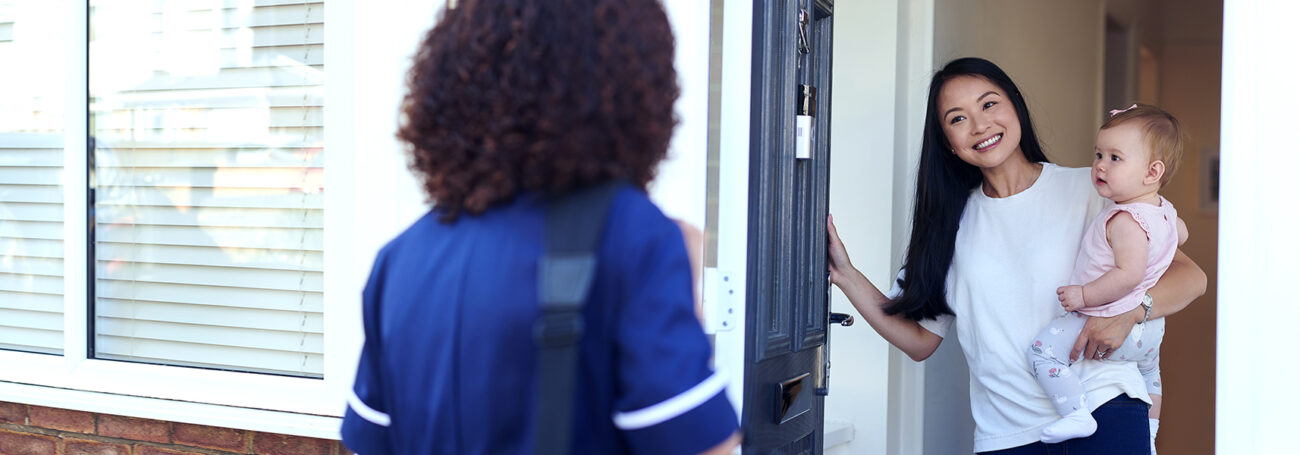Home visiting is a service delivery strategy that connects expectant parents and caregivers of young children with a designated support person—typically a trained nurse, social worker, or early childhood specialist. Services are voluntary and provided in the family’s home or at a location of their choice.
A two-generation approach, home visiting delivers both caregiver- and child-oriented services to help the whole family. It views child and family development from a holistic perspective that encompasses—
- Child health and well-being
- Child development and school readiness
- Positive caregiver-child relationships
- Caregiver health and well-being
- Family education and employment goals
- Family functioning
States, territories, the District of Columbia, and Indigenous organizations implement home visiting models that match the needs of their communities using varied funding streams, including the Maternal, Infant, and Early Childhood Home Visiting (MIECHV) Program.
Home visiting has a strong evidence base, with many studies showing that it works. (Source: For a more comprehensive review of the evidence base for home visiting, see Components Associated With Home Visiting Program Outcomes: A Meta-Analysis retrieved from [https://www.ncbi.nlm.nih.gov/pubmed/24187111](https://www.ncbi.nlm.nih.gov/pubmed/24187111).)Go to footnote #>1 There are currently 18 evidence-based home visiting models operating in the United States that meet standards of evidence as determined by the Home Visiting Evidence of Effectiveness (HomVEE) project. (Source: The 2024 Home Visiting Yearbook defines evidence-based home visiting as models that have met standards of evidence as determined by HomVEE.)Go to footnote #>2 (Source: HomVEE approved another model, Preparing for Life — Home Visiting (PFL), in 2023. We do not include PFL data in this yearbook because the model did not start serving families in the United States until 2024.)Go to footnote #>3
Implementing a “Family Bill of Rights” to Advance Equity in Home Visiting
 In 2022, the Rhode Island Department of Health and Community Care Alliance concluded an 18-month project seeking to address health inequities in state and local home visiting. The team, inspired by the National Association to Advance Black Birth and supported through the Home Visiting Collaborative Improvement and Innovation Network 2.0, adapted and implemented a “family bill of rights” to share with caregivers during intake. Their resource featured consistent, easy-to-understand information—including families’ right to leave the program—translated into multiple languages. According to Healthy Families America home visitor Sherly Frederick, the result was caregivers knowing that, “. . . no matter the[ir] race, the[ir] gender, they know being part of our program, they’re going to be seen, they’re going to be served. And they’re going to receive the same services, the same care.”
In 2022, the Rhode Island Department of Health and Community Care Alliance concluded an 18-month project seeking to address health inequities in state and local home visiting. The team, inspired by the National Association to Advance Black Birth and supported through the Home Visiting Collaborative Improvement and Innovation Network 2.0, adapted and implemented a “family bill of rights” to share with caregivers during intake. Their resource featured consistent, easy-to-understand information—including families’ right to leave the program—translated into multiple languages. According to Healthy Families America home visitor Sherly Frederick, the result was caregivers knowing that, “. . . no matter the[ir] race, the[ir] gender, they know being part of our program, they’re going to be seen, they’re going to be served. And they’re going to receive the same services, the same care.”
